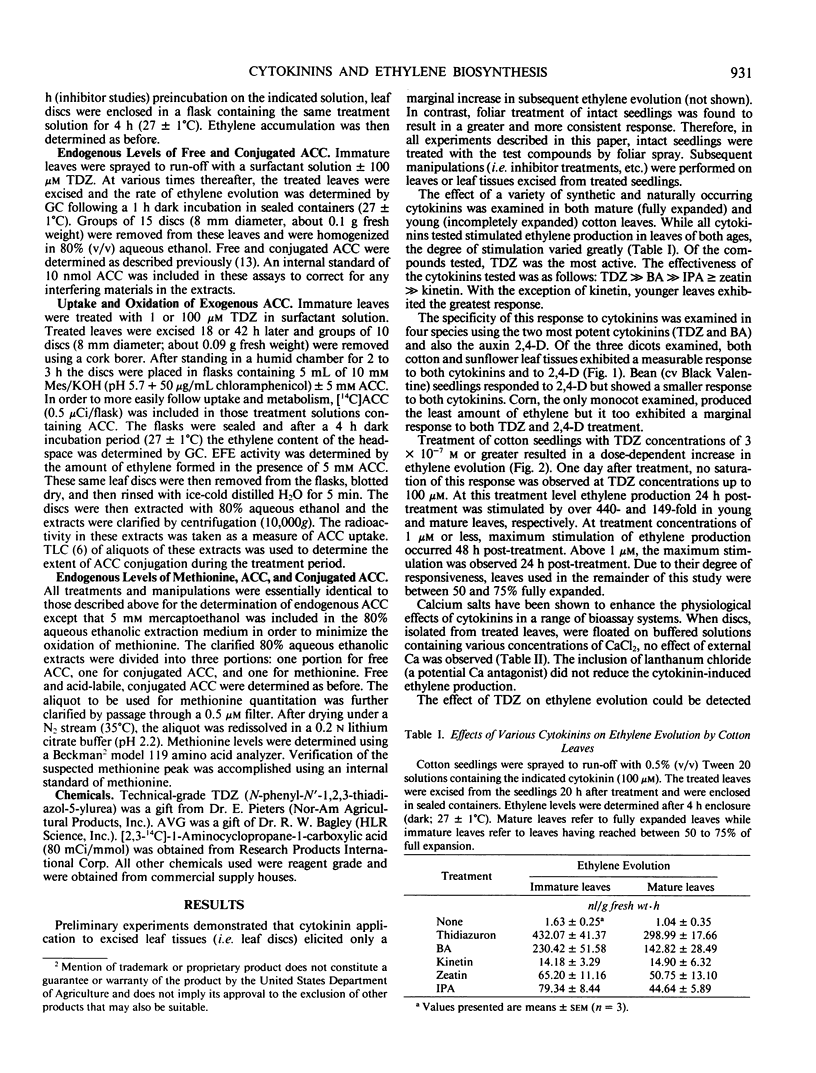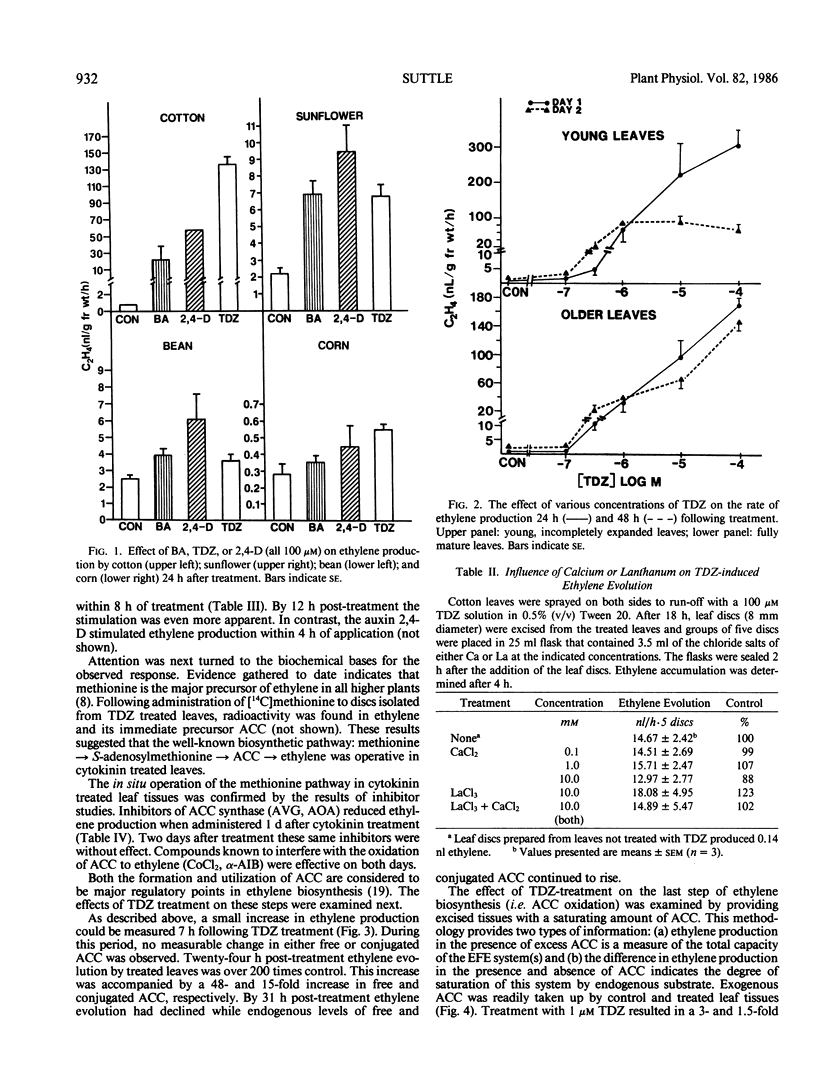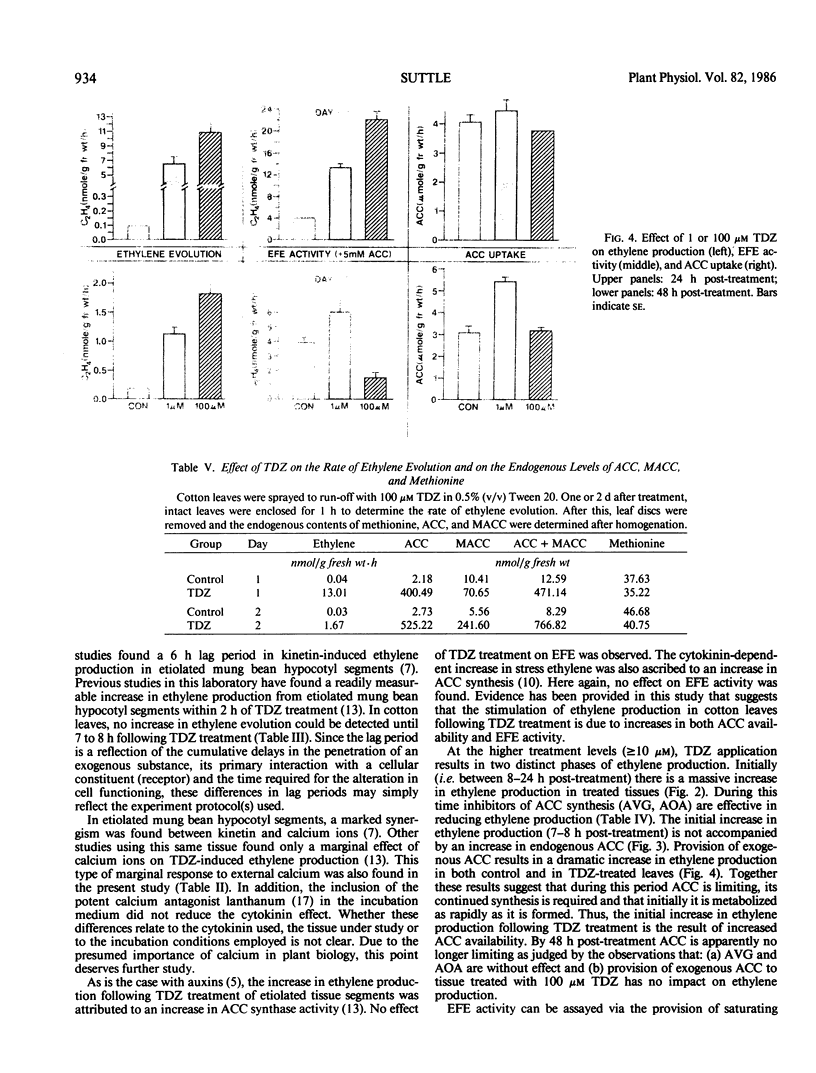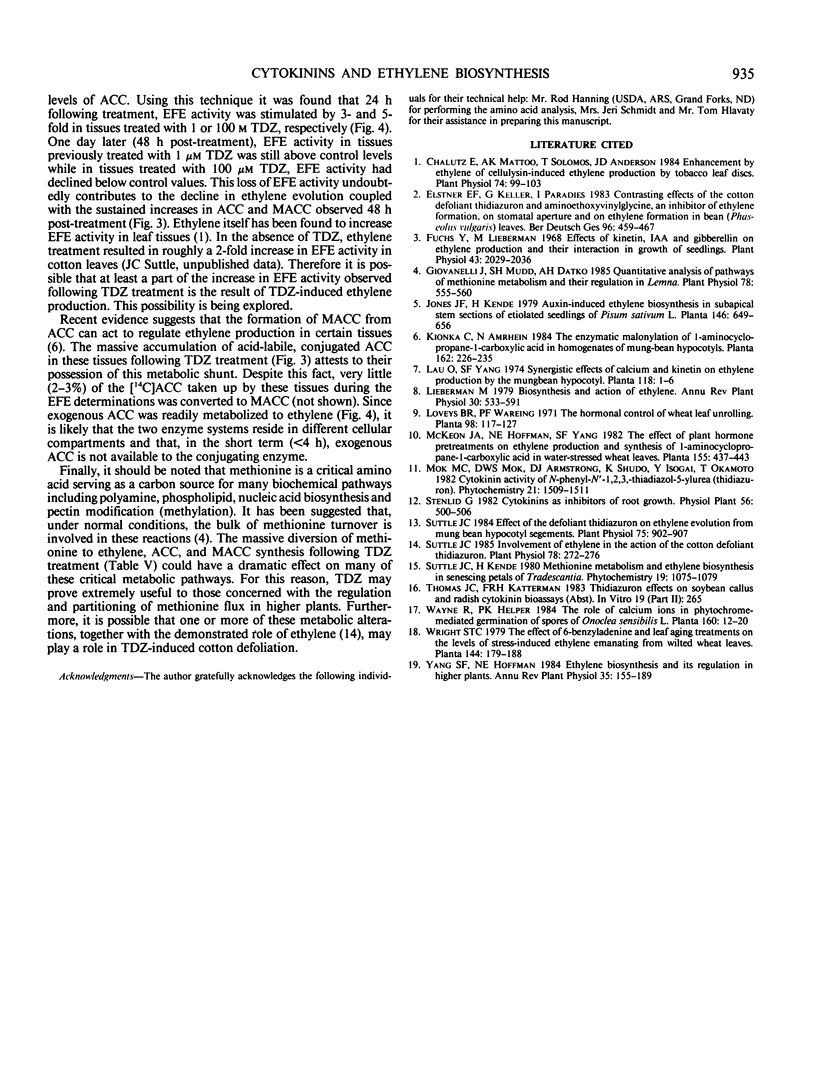Abstract
The influence of cytokinins on ethylene production was examined using cotton leaf tissues. Treatment of intact cotton (Gossypium hirsutum L. cv LG 102) seedlings with both natural and synthetic cytokinins resulted in an increase in ethylene production by excised leaves. The effectiveness of the cytokinins tested was as follows: thidiazuron ≫ BA ≫ isopentyladenine ≥ zeatin ≫ kinetin. Using 100 micromolar thidiazuron (TDZ), an initial increase in ethylene production was observed 7 to 8 hours post-treatment, reached a maximum by 24 hours and then declined. Inhibitors of 1-aminocyclopropane-1-carboxylic acid (ACC) synthesis and its oxidation to ethylene reduced ethylene production 24 hours post-treatment; however, by 48 hours only inhibitors of ACC oxidation were effective. The increase in ethylene production was accompanied by a massive accumulation of ACC and its acid-labile conjugate. TDZ treatment resulted in a significant increase in the capacity of tissues to oxidize ACC to ethylene. Endogenous levels of methionine remained constant following TDZ treatment. It was concluded that the stimulation of ethylene production in cotton leaves following cytokinin treatment was the result of an increase in both the formation and oxidation of ACC.
Full text
PDF





Images in this article
Selected References
These references are in PubMed. This may not be the complete list of references from this article.
- Chalutz E., Mattoo A. K., Solomos T., Anderson J. D. Enhancement by ethylene of cellulysin-induced ethylene production by tobacco leaf discs. Plant Physiol. 1984 Jan;74(1):99–103. doi: 10.1104/pp.74.1.99. [DOI] [PMC free article] [PubMed] [Google Scholar]
- Fuchs Y., Lieberman M. Effects of Kinetin, IAA, and Gibberellin on Ethylene Production, and Their Interactions in Growth of Seedlings. Plant Physiol. 1968 Dec;43(12):2029–2036. doi: 10.1104/pp.43.12.2029. [DOI] [PMC free article] [PubMed] [Google Scholar]
- Giovanelli J., Mudd S. H., Datko A. H. Quantitative analysis of pathways of methionine metabolism and their regulation in lemna. Plant Physiol. 1985 Jul;78(3):555–560. doi: 10.1104/pp.78.3.555. [DOI] [PMC free article] [PubMed] [Google Scholar]
- Suttle J. C. Effect of the defoliant thidiazuron on ethylene evolution from mung bean hypocotyl segments. Plant Physiol. 1984 Aug;75(4):902–907. doi: 10.1104/pp.75.4.902. [DOI] [PMC free article] [PubMed] [Google Scholar]
- Suttle J. C. Involvement of ethylene in the action of the cotton defoliant thidiazuron. Plant Physiol. 1985 Jun;78(2):272–276. doi: 10.1104/pp.78.2.272. [DOI] [PMC free article] [PubMed] [Google Scholar]



